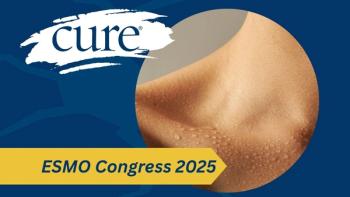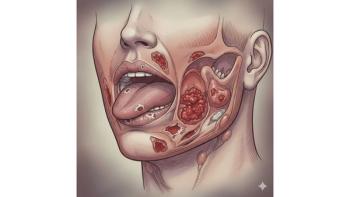
An Overview of Head and Neck Cancer

Transcript:
Meryl Kaufman, M.Ed., CCC-SLP, BRS-S: Welcome to this CURE Connections® program titled “Head and Neck Cancer: Through the Eyes of a Patient.” I’m Meryl Kaufman, a certified speech-language pathologist and founder of Georgia Speech and Swallowing LLC. I am joined today by Dr. Itzhak Brook, a professor of pediatrics and medicine at Georgetown University School of Medicine, who was diagnosed with throat cancer in 2006. Together we will discuss the prevalence of head and neck cancer, what unique challenges patients may face and how one can adjust to life after receiving treatment for their disease. Dr. Brook and I also serve as board members on the Head and Cancer Alliance.
Dr. Brook, let’s talk about head and neck cancer in general. What’s the difference between head and neck cancer associated with the traditional risk factors, such as smoking and drinking, and HPV-related head and neck cancers?
Itzhak Brook, M.D., M.Sc.: The traditional head and neck cancer is related to smoking and alcohol consumption. It’s usually associated with a high rate of laryngeal cancer. And HPV-related cancer is a relatively new arrival on the scene of head and neck cancer, and it’s associated with a condition of infection by a venereal disease. The virus HPV is usually associated with a posterior tongue cancer or an oropharyngeal cancer.
Meryl Kaufman, M.Ed., CCC-SLP, BRS-S: Exactly, yes. So the HPV viruses typically in the oropharynx, the tonsil and the tongue basis are certainly rising in incidence as compared with the traditional head and neck cancers, which are decreasing in incidence. In fact, it’s anticipated that in the year 2020, the HPV-related oropharyngeal cancers are going to surpass HPV-related cervical cancers, which are typically what you think of with the HPV virus. So that is a new patient population, but the good news is that the survival rates are better for the HPV-related head and neck cancers versus the non-HPV-related cancers. Can you speak a little bit about the incidence of the two?
Itzhak Brook, M.D., M.Sc.: The incidence of head and neck cancer is not as high as others like colon cancer, breast cancer in women or lung cancer, but it’s around the ninth or 10th cause of cancer in the world in this country. In countries where there is smoking and alcohol consumption, it’s a higher rate. HPV is usually happening in younger people, in the late 30s or early 40s. And fortunately, we hope that it could be prevented by vaccination. Although it’s approved that it can, it’s not yet available because the incubation period for the cancer, as you may call it, takes 20, 30 years, so we don’t really know. Fortunately, even though HPV is very common, the occurrence of HPV-related cancer is very, very rare.
Meryl Kaufman, M.Ed., CCC-SLP, BRS-S: Correct. In terms of the vaccination for the HPV virus, I agree, the proof certainly isn’t definitively out there yet, but the vaccine protects against the strain of virus that ultimately can lead to head and neck cancer. So the thought is that by preventing the contraction of the virus, hopefully we can also prevent these head and neck cancers, which is why the American Academy of Pediatrics and the CDC (Centers for Disease Control and Prevention) recommend that children between the ages of 11 and 12, female and males, are vaccinated prior to sexual debut in the hopes of preventing these cancers down the road, certainly. So yes, head and neck cancer does account for about 6 percent of all cancers worldwide, with about 500,000 cases worldwide. And in the United States, we anticipate about 65,000 a year, I believe, and they do occur more frequently in men, almost twice as often in men than in women and typically in people over the age of 50 in the traditional head and neck cancers. But certainly, there is a change in that with the introduction of the HPV-related cancers. Can you talk a little bit about prevention in terms of things that we can do to prevent the risky behaviors?
Itzhak Brook, M.D., M.Sc.: Of course, with the traditional cancers, it can be prevented by not smoking or drinking alcohol in high quantities. But there’s the behavioral changes that men and women can change that can reduce the risk of acquiring it. It’s a sexually transmitted disease. Oral sex has been the No. 1 cause, so you think of condoms or men using them also when having oral sex may prevent it.
Transcript Edited for Clarity





